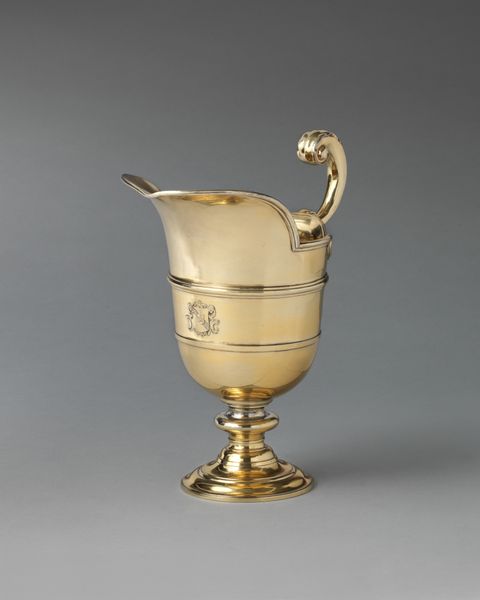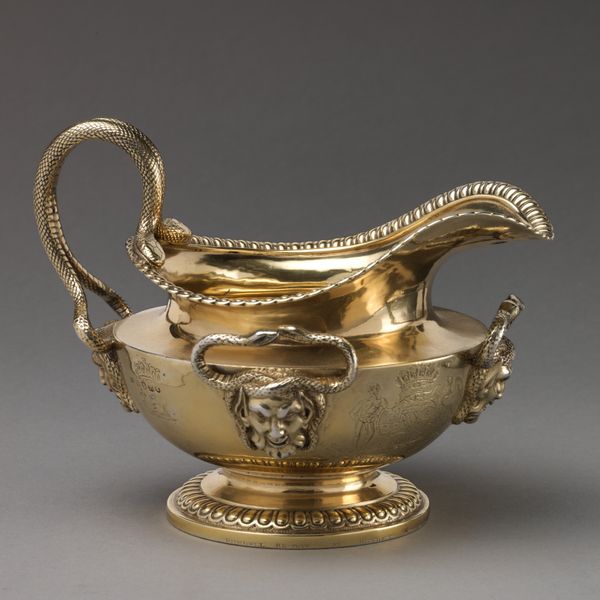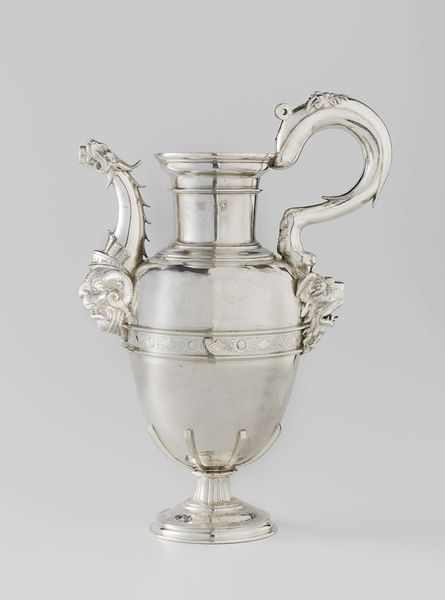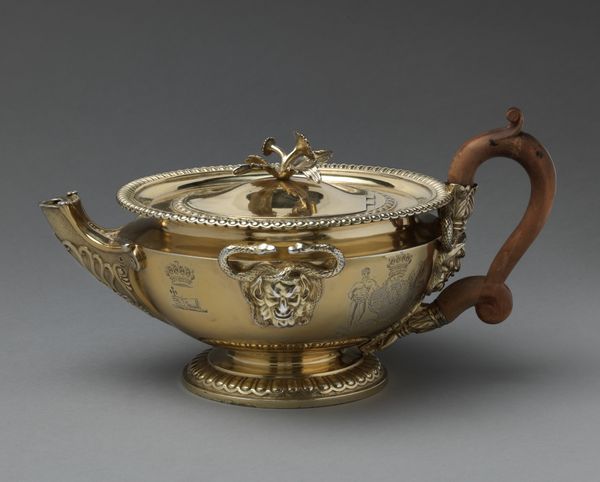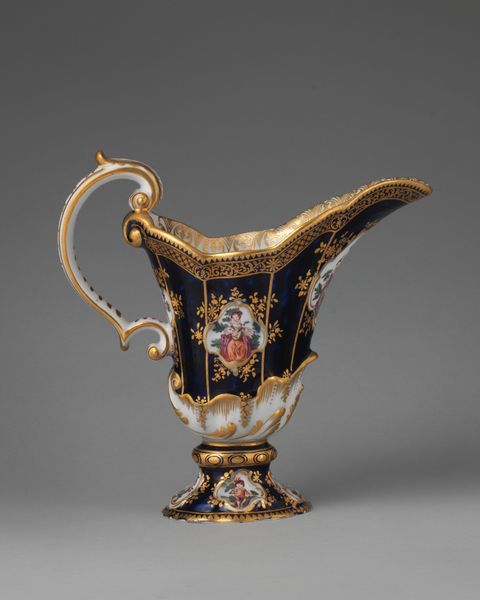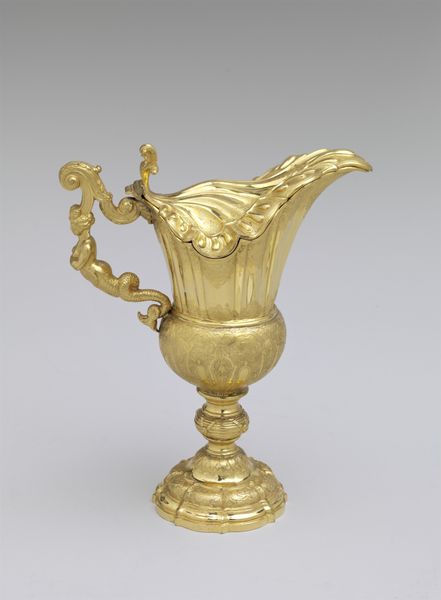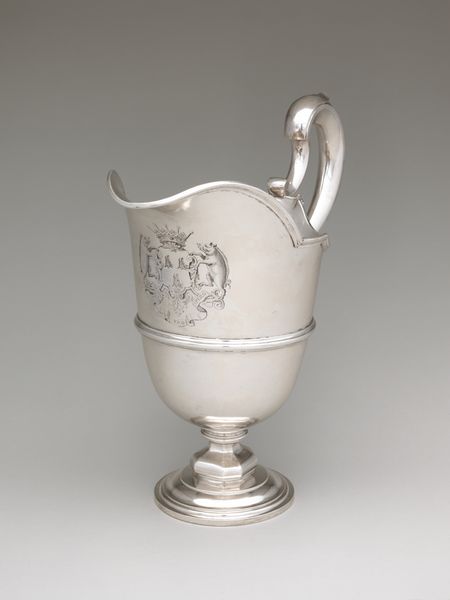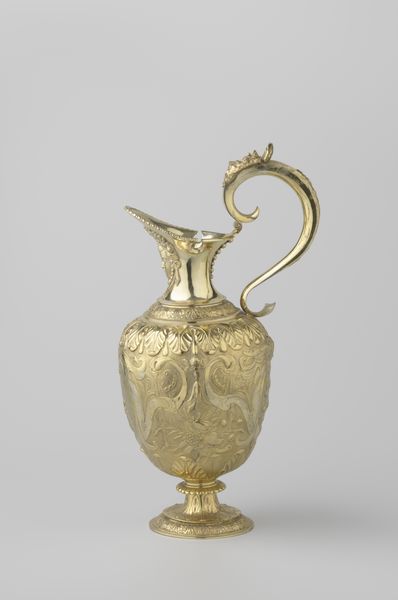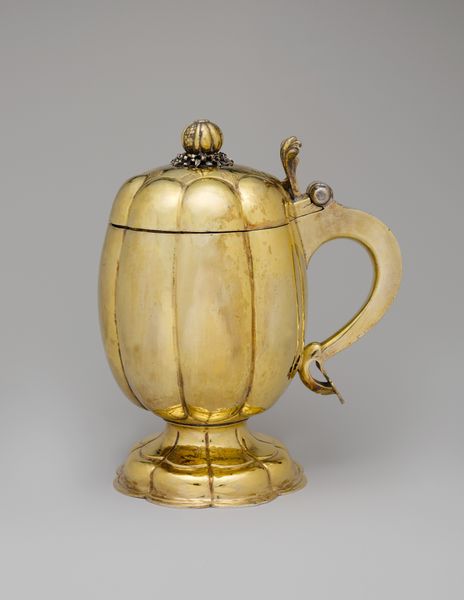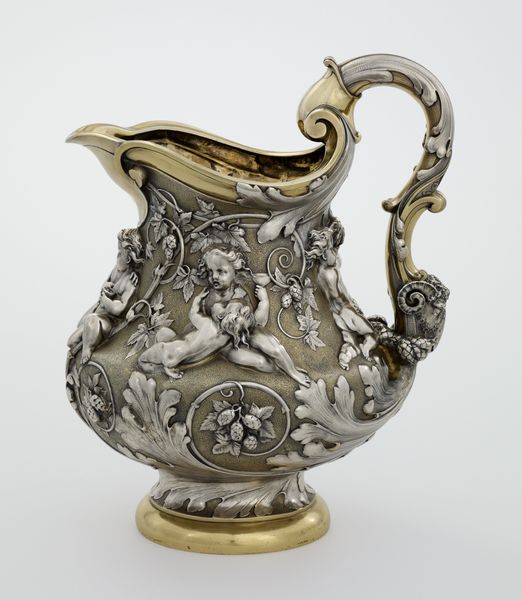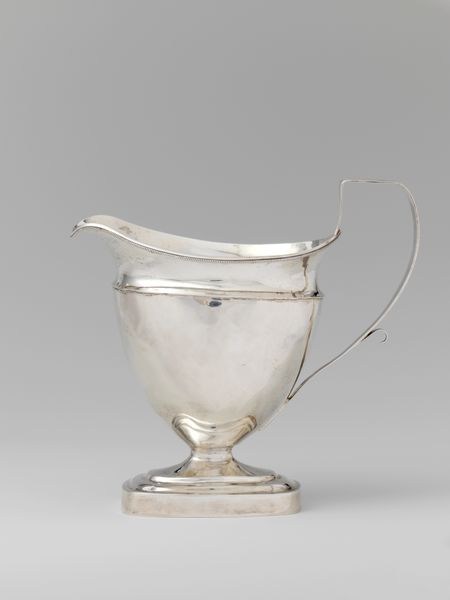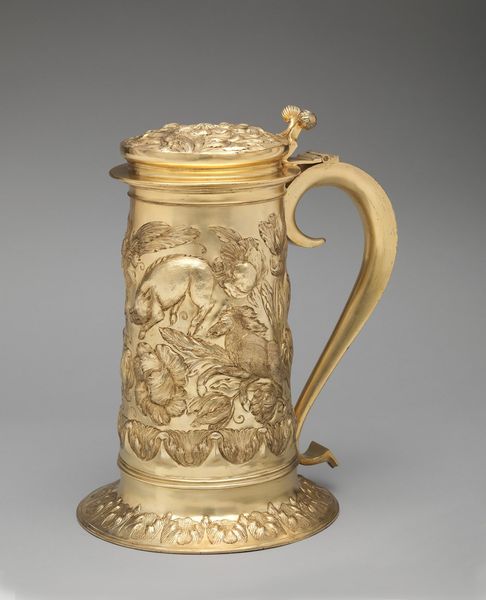
silver, metal, sculpture
#
silver
#
baroque
#
metal
#
sculpture
#
decorative-art
Dimensions: Overall (confirmed): 14 1/4 x 7 3/8 x 11 1/2 in., 103 oz. 15 dwg. (36.2 x 18.7 x 29.2 cm, 3.2265kg)
Copyright: Public Domain
Editor: Here we have a silver Ewer, created sometime between 1716 and 1726. Its intricate design immediately catches my eye – especially that ornate handle! What structural elements stand out to you in this piece? Curator: Observe how the craftsman employed balance and rhythm. The body of the Ewer is segmented into horizontal registers, each displaying unique decorative motifs. This segmentation, together with the vertical fluting on the lower portion, establishes a clear hierarchy of form. Editor: Hierarchy of form...interesting. The handle does seem to disrupt that a bit. Curator: Precisely. Note the dramatic curve and the figurative finial atop the handle. This adds a counterpoint, a dynamic element that disrupts the static symmetry of the body. Ask yourself, what is the relationship between the smoothness of the vessel's primary surface, and the textured decoration elsewhere? Editor: I see what you mean – the polished surfaces really enhance the areas of detailed carving. Do you think the artist was playing with contrasting textures on purpose? Curator: Undoubtedly. The manipulation of light and shadow created by these varying textures animates the entire piece, compelling our eyes to move across its surfaces, noting the qualitative transitions. Moreover, reflect upon the relationship between this object's function and its decoration. Editor: So, the beauty *is* in the details. It's fascinating to consider how different artistic choices play off each other. Curator: Precisely. And remember that careful analysis of form reveals the intent and skill inherent in this creation. Editor: Thank you! Now I’ll look at Baroque art a bit differently, not just for grand gestures but refined structural detail.
Comments
No comments
Be the first to comment and join the conversation on the ultimate creative platform.
